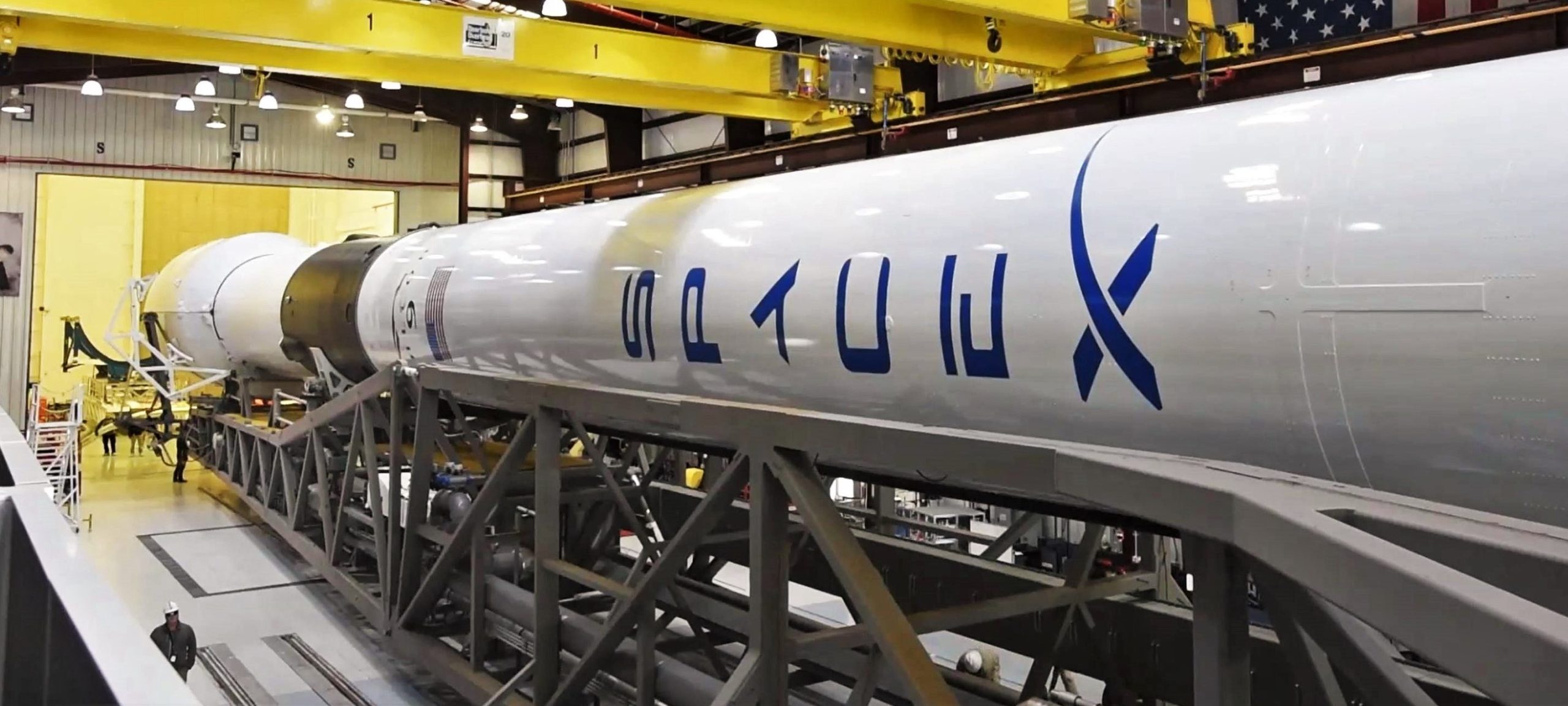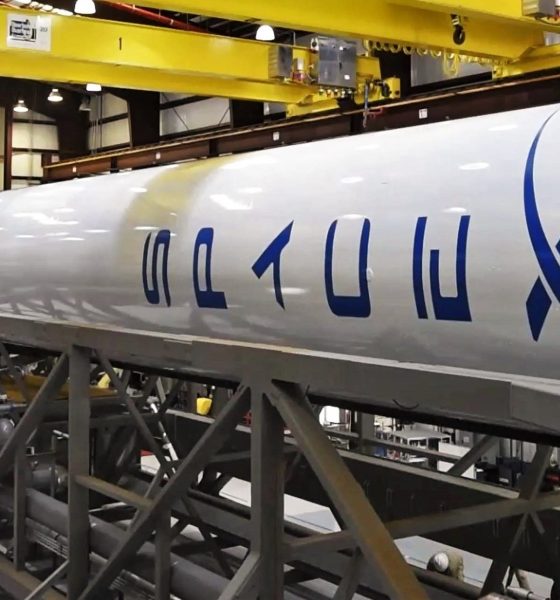

News
SpaceX sues US government to protest mystery launch or rocket R&D contracts
SpaceX has filed a lawsuit – technically a “Bid Protest Complaint” – against the United States government and successfully petitioned for the file to remain sealed, restricting access to additional case details for the time being.
This development follows a quiet series of bid protests SpaceX filed with the Government Accountability Office (GAO) in February 2019, shortly after NASA announced that it had awarded ULA a ~$150M launch contract for Lucy (a robotic Trojan asteroid explorer). SpaceX believed that it could perform the mission at a “dramatically lower” price, potentially saving the federal government tens of millions of dollars. SpaceX withdrew both of its GAO bid protests without comment on April 4th. Whether those prior protests are related to SpaceX’s May 2019 lawsuit is unclear.
Adding even more complexity and uncertainty to the series of events, NASA awarded SpaceX the launch contract for its Double Asteroid Redirection Test (DART) spacecraft on April 20th, about two weeks after SpaceX retracted its Lucy protests. The cause-and-effect relationship between both events is wholly ambiguous. Perhaps SpaceX withdrew before the company was made aware of their DART win. Perhaps they withdrew their protest because they learned of NASA’s award.
Regardless of what did or did not trigger the contract award, the fact remains that SpaceX’s DART launch will cost NASA ~$70M, less than half the price of ULA’s ~$150M Lucy launch contract. As such, it seems likely that launching Lucy on Falcon 9 could have saved the US government as much as $50M, assuming an expendable profile (~$100M per SpaceX’s latest GPS III launch contracts).

Returning to the topic at hand, the simplest explanation is that SpaceX’s GAO bid protests and May 2019 lawsuit are in some way related. Although SpaceX was clearly correct when it insinuated that it could launch Lucy far more affordably than ULA, the company was criticized for its GAO protests because they effectively froze – or at least complicated – work on the NASA spacecraft. In the event that the withdrawals and lawsuit are related, SpaceX would have backed down after entering into the slow GAO protest process, essentially conceding the contract to ULA and allowing spacecraft work to continue without disruption.
Replaced with a lawsuit against the US government, SpaceX could instead be attempting to change the processes that lead NASA to award ULA the Lucy launch contract in spite of potential savings on the order of ~$50M. SpaceX has done something similar once before when it sued the US Air Force for its uncompetitive launch procurement processes, a largely successful endeavor that has helped force some competition back into USAF/DoD launch contracts.


However, there are several additional possibilities for the actual subject of SpaceX’s latest sealed suit. Most recently, NASA distributed ~$46M among 11 companies for studies and prototypes of lunar landers, transfer vehicles, and in-space refueling technology. SpaceX tied with Aerojet Rocketdyne for the least substantial awards out of those 11 companies, each receiving funds for a single study, while most other awardees were contracted for multiple studies and/or prototypes. This is a stretch, however.
The most likely alternative to a continuation of SpaceX’s Lucy protest is a lawsuit focused on the USAF’s latest EELV/NSSL development contracts and its proposed continuation of block-buy launch procurement. Of the four companies involved, Blue Origin and SpaceX have both criticized the USAF for a variety of reasons. Both did agree, however, in their dislike of the USAF’s inexplicable desire to award all launch contracts to two victors, despite there being as many as four different launch vehicles that could feasibly compete for those several-dozen contracts.

For now, details of SpaceX’s latest lawsuit will remain sealed, leaving the company’s motivations veiled in mystery. SpaceX’s next USAF mission could occur as early as June 22nd. Known as STP-2, it will mark Falcon Heavy’s third flight, the rocket’s first defense-related launch, and the USAF’s first use of flight-proven SpaceX boosters. If successful, SpaceX will effectively be able to compete with ULA for all conceivable future launch contracts.
Check out Teslarati’s Marketplace! We offer Tesla accessories, including for the Tesla Cybertruck and Tesla Model 3.

News
Tesla FSD (Supervised) v14.2.2 starts rolling out
The update focuses on smoother real-world performance, better obstacle awareness, and precise end-of-trip routing, among other improvements.

Tesla has started rolling out Full Self-Driving (Supervised) v14.2.2, bringing further refinements to its most advanced driver-assist system. The new FSD update focuses on smoother real-world performance, better obstacle awareness, and precise end-of-trip routing, among other improvements.
Key FSD v14.2.2 improvements
As noted by Not a Tesla App, FSD v14.2.2 upgrades the vision encoder neural network with higher resolution features, enhancing detection of emergency vehicles, road obstacles, and human gestures. New Arrival Options let users select preferred drop-off styles, such as Parking Lot, Street, Driveway, Parking Garage, or Curbside, with the navigation pin automatically adjusting to the user’s ideal spot for precision.
Other additions include pulling over for emergency vehicles, real-time vision-based detours for blocked roads, improved gate and debris handling, and extreme Speed Profiles for customized driving styles. Reliability gains cover fault recovery, residue alerts on the windshield, and automatic narrow-field camera washing for new 2026 Model Y units.
FSD v14.2.2 also boosts unprotected turns, lane changes, cut-ins, and school bus scenarios, among other things. Tesla also noted that users’ FSD statistics will be saved under Controls > Autopilot, which should help drivers easily view how much they are using FSD in their daily drives.
Key FSD v14.2.2 release notes
Full Self-Driving (Supervised) v14.2.2 includes:
- Upgraded the neural network vision encoder, leveraging higher resolution features to further improve scenarios like handling emergency vehicles, obstacles on the road, and human gestures.
- Added Arrival Options for you to select where FSD should park: in a Parking Lot, on the Street, in a Driveway, in a Parking Garage, or at the Curbside.
- Added handling to pull over or yield for emergency vehicles (e.g. police cars, fire trucks, ambulances).
- Added navigation and routing into the vision-based neural network for real-time handling of blocked roads and detours.
- Added additional Speed Profile to further customize driving style preference.
- Improved handling for static and dynamic gates.
- Improved offsetting for road debris (e.g. tires, tree branches, boxes).
- Improve handling of several scenarios, including unprotected turns, lane changes, vehicle cut-ins, and school buses.
- Improved FSD’s ability to manage system faults and recover smoothly from degraded operation for enhanced reliability.
- Added alerting for residue build-up on interior windshield that may impact front camera visibility. If affected, visit Service for cleaning!
- Added automatic narrow field washing to provide rapid and efficient front camera self-cleaning, and optimize aerodynamics wash at higher vehicle speed.
- Camera visibility can lead to increased attention monitoring sensitivity.
Upcoming Improvements:
- Overall smoothness and sentience.
- Parking spot selection and parking quality.
News
Tesla is not sparing any expense in ensuring the Cybercab is safe
Images shared by the longtime watcher showed 16 Cybercab prototypes parked near Giga Texas’ dedicated crash test facility.

The Tesla Cybercab could very well be the safest taxi on the road when it is released and deployed for public use. This was, at least, hinted at by the intensive safety tests that Tesla seems to be putting the autonomous two-seater through at its Giga Texas crash test facility.
Intensive crash tests
As per recent images from longtime Giga Texas watcher and drone operator Joe Tegtmeyer, Tesla seems to be very busy crash testing Cybercab units. Images shared by the longtime watcher showed 16 Cybercab prototypes parked near Giga Texas’ dedicated crash test facility just before the holidays.
Tegtmeyer’s aerial photos showed the prototypes clustered outside the factory’s testing building. Some uncovered Cybercabs showed notable damage and one even had its airbags engaged. With Cybercab production expected to start in about 130 days, it appears that Tesla is very busy ensuring that its autonomous two-seater ends up becoming the safest taxi on public roads.
Prioritizing safety
With no human driver controls, the Cybercab demands exceptional active and passive safety systems to protect occupants in any scenario. Considering Tesla’s reputation, it is then understandable that the company seems to be sparing no expense in ensuring that the Cybercab is as safe as possible.
Tesla’s focus on safety was recently highlighted when the Cybertruck achieved a Top Safety Pick+ rating from the Insurance Institute for Highway Safety (IIHS). This was a notable victory for the Cybertruck as critics have long claimed that the vehicle will be one of, if not the, most unsafe truck on the road due to its appearance. The vehicle’s Top Safety Pick+ rating, if any, simply proved that Tesla never neglects to make its cars as safe as possible, and that definitely includes the Cybercab.
Elon Musk
Tesla’s Elon Musk gives timeframe for FSD’s release in UAE
Provided that Musk’s timeframe proves accurate, FSD would be able to start saturating the Middle East, starting with the UAE, next year.

Tesla CEO Elon Musk stated on Monday that Full Self-Driving (Supervised) could launch in the United Arab Emirates (UAE) as soon as January 2026.
Provided that Musk’s timeframe proves accurate, FSD would be able to start saturating the Middle East, starting with the UAE, next year.
Musk’s estimate
In a post on X, UAE-based political analyst Ahmed Sharif Al Amiri asked Musk when FSD would arrive in the country, quoting an earlier post where the CEO encouraged users to try out FSD for themselves. Musk responded directly to the analyst’s inquiry.
“Hopefully, next month,” Musk wrote. The exchange attracted a lot of attention, with numerous X users sharing their excitement at the idea of FSD being brought to a new country. FSD (Supervised), after all, would likely allow hands-off highway driving, urban navigation, and parking under driver oversight in traffic-heavy cities such as Dubai and Abu Dhabi.
Musk’s comments about FSD’s arrival in the UAE were posted following his visit to the Middle Eastern country. Over the weekend, images were shared online of Musk meeting with UAE Defense Minister, Deputy Prime Minister, and Dubai Crown Prince HH Sheikh Hamdan bin Mohammed. Musk also posted a supportive message about the country, posting “UAE rocks!” on X.
FSD recognition
FSD has been getting quite a lot of support from foreign media outlets. FSD (Supervised) earned high marks from Germany’s largest car magazine, Auto Bild, during a test in Berlin’s challenging urban environment. The demonstration highlighted the system’s ability to handle dense traffic, construction sites, pedestrian crossings, and narrow streets with smooth, confident decision-making.
Journalist Robin Hornig was particularly struck by FSD’s superior perception and tireless attention, stating: “Tesla FSD Supervised sees more than I do. It doesn’t get distracted and never gets tired. I like to think I’m a good driver, but I can’t match this system’s all-around vision. It’s at its best when both work together: my experience and the Tesla’s constant attention.” Only one intervention was needed when the system misread a route, showcasing its maturity while relying on vision-only sensors and over-the-air learning.








